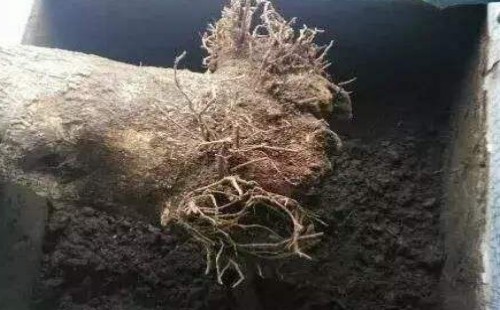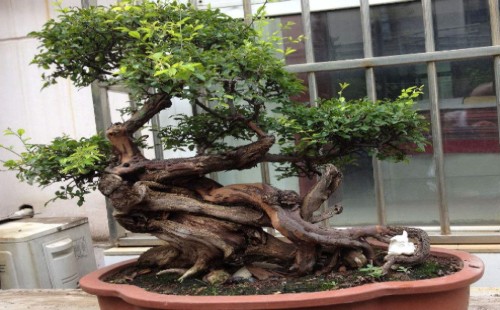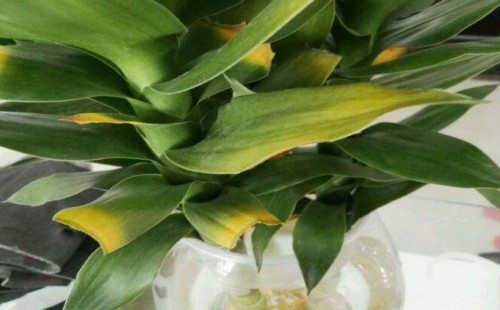The method of re-rooting after rotten roots of happiness tree
What potted flower plants fear most is the phenomenon of rotten roots, which means the decline or loss of the absorptive capacity of plant roots. If they are not rescued in time, the branches and leaves will be withered and yellow, shedding, and serious will result in death. Especially for the happiness tree, which has huge branches and leaves and relatively shallow roots, it often brings serious losses to us when it meets the phenomenon of rotten roots. Therefore, we need an immediate remedy to restore its roots to growth and normal absorptive capacity, so how can the happiness tree take root again after it has rotted roots?

The phenomenon of rotting roots of potted happiness trees is generally caused by excessive watering or excessive humidity for a long time. If the ventilation is not smooth and the environmental temperature is too high, the phenomenon of rotting roots will become more and more serious. When we encounter the rotten roots of the happiness tree, it is natural to rescue it in time, let it take root again, and restore the normal absorption capacity of the root system, so as to ensure that water and nutrients can be smoothly transferred to the tree. Next, the editor will share with you how to take root again after the happiness tree has rotted roots.
When there are rotten roots in potted happiness trees, they will generally produce some withered and yellow branches and leaves in varying degrees. We need to cut off these withered branches and leaves in time, so as to reduce the burden on the roots. After all, the root system has become very fragile under such circumstances, and cutting off the withered and yellow branches and leaves can save the consumption of nutrients and water, and prevent the nutrients in the tree from being consumed quickly. And we need to keep the nutrients saved as much as possible until the roots return to normal supply capacity.
Next, the plant will be removed from the pot, the happiness tree will be taken out of the flowerpot, and then the excess soil adhered to the roots will be cleaned up. Then cut off the rotten parts of the roots, especially the diseased roots as much as possible, because these rotten roots are covered with germs. After that, we also need to use other disinfectants such as chlorothalonil, carbendazim, potassium permanganate or plant ash to treat the wounds left after root trimming to ensure that the remaining roots will not continue to be infected and create conditions for the restoration of rooting.
For the comparison of the above several germicidal and disinfection drugs, the original chlorothalonil is a broad-spectrum and protective fungicide with no internal absorption. Spraying it on the root system of Happiness Tree can make the surface layer of the root system show a state of adhesion. The advantage of this adhesion is that it is not suitable to be watered or washed away by Rain Water, so the drug is valid for a long time, which has a more obvious effect on the recovery of rotten roots of the happiness tree. Therefore, it is recommended to use chlorothalonil to sterilize and disinfect the roots of Happiness Tree.
At the same time, in order to promote the germination of new roots and the continued growth of old roots, it is suggested that we use some rooting powder to dissolve into rooting solution, and then use it to soak the roots of the happiness tree. After drying the excess water, we can plant the root-damaged but treated happiness tree back into the new soil of the new flowerpot. After finishing the pot, water the potted plant once as root water. Then put the potted plants in a cool place to slow down the seedlings for a period of time, and try not to rush to water or provide direct light during the slow seedling period. If there is a drying phenomenon, you can spray water properly, but also control the amount of water. After the new roots of the plant grow smoothly and the basin survives, we will resume the normal maintenance and management process.
Time: 2019-05-28 Click:
- Prev

What if the Finch plum loses its leaves?
The loss of leaves in bonsai plants is a very distressing thing, and I believe many bonsai friends who like to grow bonsai plants have encountered it. The reasons for the loss of leaves in different bonsai plants are not the same, and even the phenomena are not exactly the same. For deciduous trees, they lose their leaves in autumn and winter.
- Next

Can the yellowing leaves of Guanyin bamboo be saved?
Guanyin bamboo stem tall and straight handsome, elegant and unrestrained posture, grow stout and quite bamboo rhyme, is a very good indoor foliage plant, is a relatively easy to see in the home environment of an evergreen plant. The handsome and elegant appearance of potted Guanyin bamboo has won the favor of many potted friends, but if its leaves turn yellow.
Related
- Fuxing push coffee new agricultural production and marketing class: lack of small-scale processing plants
- Jujube rice field leisure farm deep ploughing Yilan for five years to create a space for organic food and play
- Nongyu Farm-A trial of organic papaya for brave women with advanced technology
- Four points for attention in the prevention and control of diseases and insect pests of edible fungi
- How to add nutrient solution to Edible Fungi
- Is there any good way to control edible fungus mites?
- Open Inoculation Technology of Edible Fungi
- Is there any clever way to use fertilizer for edible fungus in winter?
- What agents are used to kill the pathogens of edible fungi in the mushroom shed?
- Rapid drying of Edible Fungi

